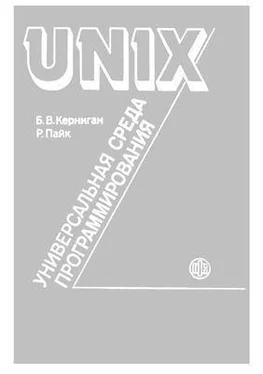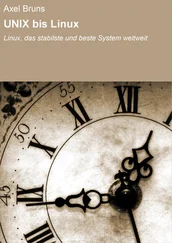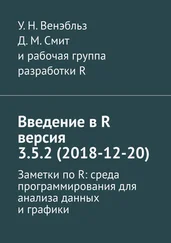The expression grammar is:
.DS
.I
expr: number
| variable
| ( expr )
| expr binop expr
| unop expr
| function ( arguments )
.R
.DE
Numbers are floating point.
The input format is
that recognized by @scanf@(3):
.ix [scanf]
digits, decimal point, digits,
.ix [hoc] manual
.ix assignment expression
.ix multiple assignment
@e@ or @E@, signed exponent.
At least one digit or a decimal point
must be present;
the other components are optional.
.PP
Variable names are formed from a letter
followed by a string of letters and numbers,
@binop@ refers to binary operators such
as addition or logical comparison;
@unop@ refers to the two negation operators,
'!' (logical negation, 'not')
and '\-' (arithmetic negation, sign change).
Table 1 lists the operators.
.TS
center, box;
с s
lfCW l.
\fBTable 1:\fP Operators, in decreasing order of precedence
.sp .5
^ exponentiation (\s-1FORTRAN\s0 **), right associative
! \- (unary) logical and arithmetic negation
* / multiplication, division
+ \- addition, subtraction
> >= relational operators: greater, greater or equal,
< <= less, less or equal,
\&== != equal, not equal (all same precedence)
&& logical AND (both operands always evaluated)
|| logical OR (both operands always evaluated)
\&= assignment, right associative
.ТЕ
.ix table~of [hoc] operators
.PP
Functions, as described later, may be defined by the user.
Function arguments are expressions separated by commas.
There are also a number of built-in functions,
all of which take a single argument,
described in Table 2.
.TS
center, box;
с s
lfCW l.
\fBTable 2:\fP Built-in Functions
.sp .5
abs(x) @| x |@, absolute value of @x@
atan(x) arc tangent of @x@
cos(x) @cos (x)@, cosine of @x@
exp(x) @e sup x@, exponential of @x@
int(x) integer part of @x@, truncated towards zero
log(x) @log (x)@, logarithm base @e@ of @x@
log10(x) @log sub 10 (x)@, logarithm base 10 of @x@
sin(x) @sin (x)@, sine of @x@
sqrt(x) @sqrt x@, @x sup half@
.ТЕ
.ix table~of [hoc] functions
.PP
Logical expressions have value 1.0 (true) and 0.0 (false).
As in C,
any non-zero value is taken to be true.
As is always the case with floating point numbers,
equality comparisons are inherently suspect. .PP
.I Hoc
also has a few built-in constants, shown in Table 3.
.TS
center, box;
c s s
lfCW n l.
\fBTable 3:\fP Built-in Constants
.sp .5
DEG 57.29577951308232087680 @180/ pi@, degrees per radian
E 2.71828182845904523536 @e@, base of natural logarithms
GAMMA 0.57721566490153286060 @gamma@, Euler-Mascheroni constant
PHI 1.61803398874989484820 @( sqrt 5 +1)/2@, the golden ratio
PI 3.14159265358979323846 @pi@, circular transcendental number
.ТЕ
.ix table~of [hoc] constants
.NH
Statements and Control Flow
.PP
.I Hoc
statements have the following grammar:
.DS
.I
stmt: expr
| variable = expr
| procedure ( arglist )
| while ( expr ) stmt
| if ( expr ) stmt
| if ( expr ) stmt else stmt
| { stmtlist }
| print expr-list
| return optional-expr
stmtlist: \fR(nothing)\fI
| stmlist stmt
.R
.DE
An assignment is parsed by default as a statement rather than
an expression, so assignments typed interactively
do not print their value.
.PP
Note that semicolons are not special to
.ix [hoc] input~format
@hoc@: statements are terminated by newlines.
This causes some peculiar behavior.
The following are legal
.IT if
statements:
.DS
.ft CW
if (x < 0) print(y) else print(z)
if (x < 0) {
print(y)
} else {
print(z)
}
.ft
.DE
In the second example, the braces are mandatory:
the newline after the
.I if
would terminate the statement and produce a syntax error were
the brace omitted.
.PP
The syntax and semantics of @hoc@
control flow facilities are basically the same as in C.
The
.I while
and
.I if
statements are just as in C, except there are no @break@ or
@continue@ statements.
.NH
Input and Output: @read@ and @print@
.PP
.ix [hoc] [read]~statement
.ix [hoc] [print]~statement
The input function @read@, like the other built-ins,
takes a single argument. Unlike the built-ins, though, the argument
is not ал expression: it is the name of a variable.
The next number (as defined above) is read from the standard input
and assigned to the named variable.
The return value of @read@ is 1 (true) if a value was read, and 0 (false)
if @read@ encountered end of file or an error.
.PP
Output is generated with the ©print© statement.
The arguments to @print@ are a comma-separated list of expressions
and strings in double quotes, as in C.
Newlines must be supplied;
they are never provided automatically by @print@.
.PP
Note that @read@ is a special built-in function, and therefore takes
a single parenthesized argument, while @print@ is a statement that takes
a comma-separated, unparenthesized list:
.DS
.ft CW
while (read(x)) {
Читать дальше
Конец ознакомительного отрывка
Купить книгу







![Александр Мещеряков - Terra Nipponica [Среда обитания и среда воображения]](/books/393699/aleksandr-mecheryakov-terra-nipponica-sreda-obitani-thumb.webp)

